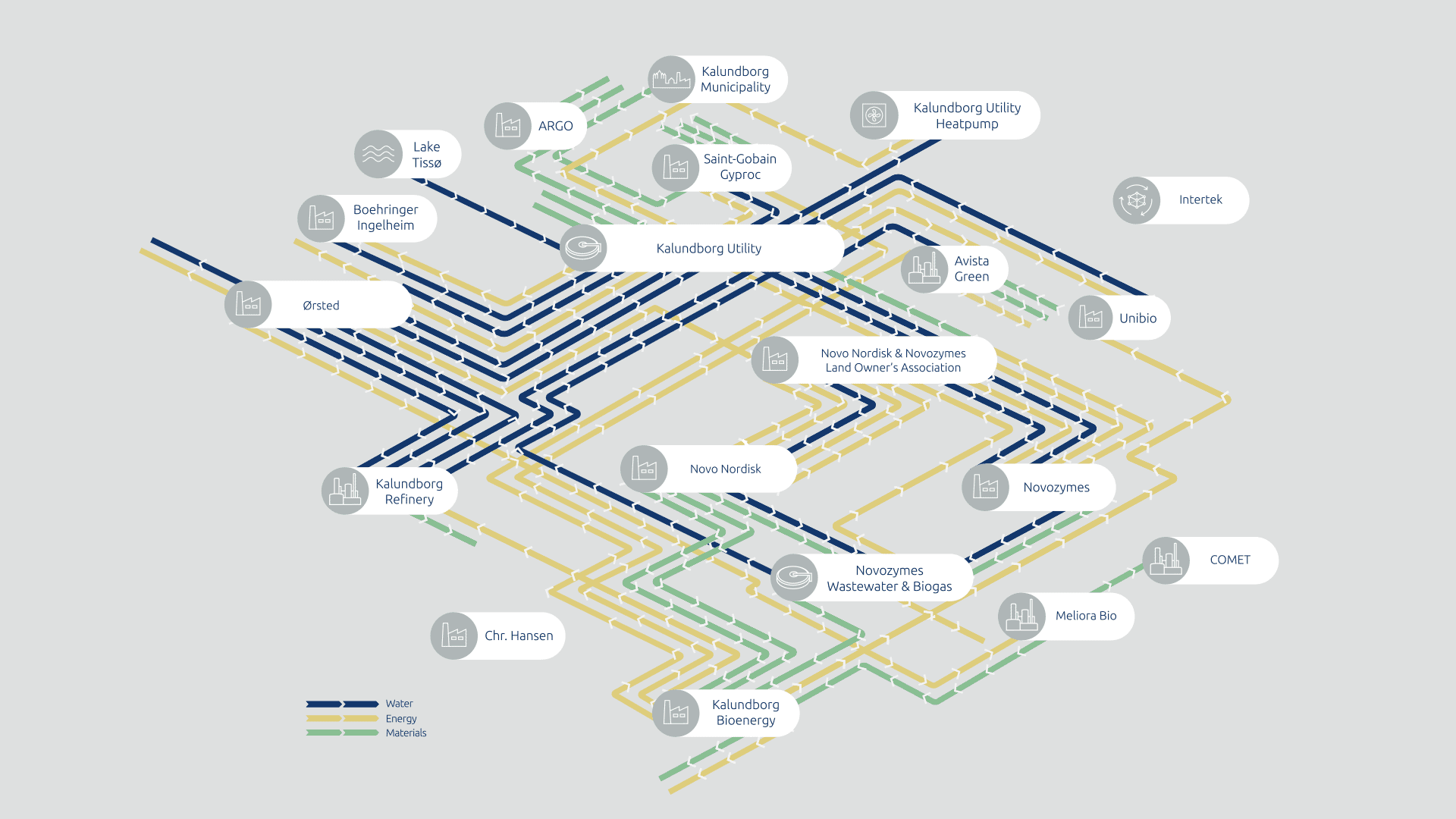Re-using industrial waste water

Our decision support model
This model functions as a guideline when developing industrial symbiosis. The guidelines are all drawn up from research and several co-design sessions with companies and experts.
If you would like more information, please see the full report or contact us
Click on the icon to reveal the several guidelines.

Pipelines
The discharge and supply should happen via pipelines. This will be a cost intensive investment but will ensure continually and safety.

Decentralised
When the quality and quantity match with a nearby company, we encourage direct exchange without a facilitating organisation in between. Here shown as a decentralized system.
_edited.png)

Centralised system
Overall, we can conclude that this industrial symbiosis system should be centralized. Here, a central organization would collect all wastewater, treat it, and distribute it back to the companies. This way continuality and quality standards are assured.
_edited.png)

_edited.png)

_edited.png)
Rain collection
We advise every company to investigate the possibilities of rainwater collection on their properties. Storing as much of it as possible and use it in the industrial processes where possible.

_edited.png)

Quality
The collected waste water will be treated by the central treatment plant up to Industry Water quality standards.
_edited.png)

Economics
In regard to the initial investment, both companies, governments and potential subsidies should cover the costs
In regard to the contracts, a "tolling structure is advised. With this, companies pay based on the balance of water they bring into the system and how much they use from it
"We have to look into a solution together"
Mette Wendel, Kalandborg Symbiosis
Industrial Symbiosis
Industrial symbiosis is a collaborative approach that connects separate industries to share resources such as materials, energy, water, and by-products. By treating the waste streams of one company as valuable inputs for another, industrial symbiosis minimizes the need for new raw materials, reduces environmental impact, and creates economic value.
At its core, industrial symbiosis emphasizes efficient resource use and sustainability. This is achieved through exchanging resources like energy, water, and materials between industrial processes. For example, wastewater or surplus heat from one company can serve as an input for another, creating mutual benefits while lowering costs and emissions.
The benefits of industrial symbiosis extend beyond cost reduction. It enhances resource security by addressing risks of scarcity, such as limited water or energy supplies, and reduces the total waste produced by participating industries. This approach supports long-term environmental sustainability while simultaneously offering economic advantages, making it an attractive strategy for industries worldwide.
By fostering cooperation and integrating proven technologies, industrial symbiosis creates opportunities for industries to operate more sustainably, ensuring a balance between economic growth and environmental preservation.
A great example of how it's done
Kalundborg Symbiosis in Denmark is a global leader in sustainable industrial water management. Since the 1960s, companies in the region have collaborated to optimize water use by sharing and reusing resources.
The system relies on water from Lake Tissø, which is distributed for industrial cooling and later reused for steam production or other processes. Treated wastewater is further repurposed by companies like Novo Nordisk and Novozymes, ensuring minimal waste and efficient resource use. Advanced treatment technologies, such as biofilm reactors, maintain water quality and even recover energy from organic waste during treatment.
Kalundborg’s water-sharing model reduces groundwater reliance, cuts costs, and minimizes environmental impact, making it a prime example of how industries can sustainably manage water resources through collaboration.
Read more:
